KRK Rokit 5 G4 vs Yamaha HS5: Which budget studio monitors are best?
How do these two affordable studio speakers compare for build, sound, set up and more?
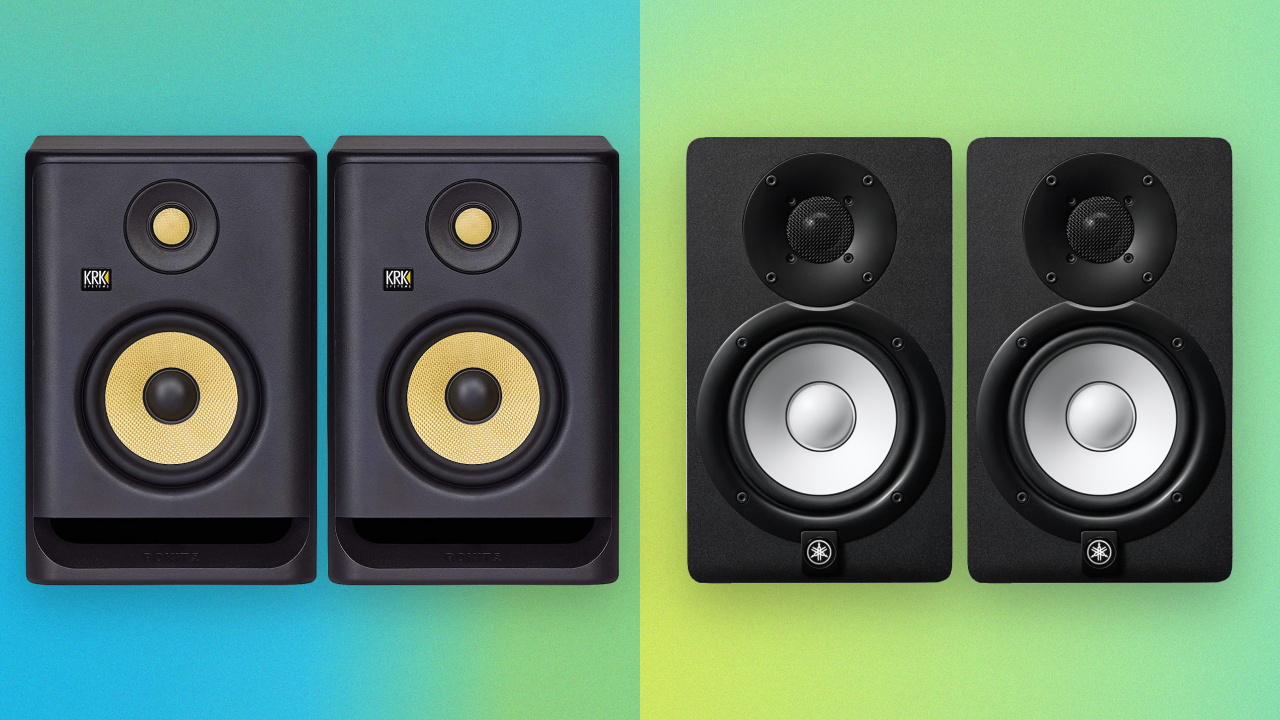
It used to be that budget studio monitors simply didn't deliver what producers need for mixing and mastering: accuracy, detail and imaging. You need to hear your mix in pristine detail so you can iron out issues, after all. However, over recent years, the technology in monitor speaker design has improved so much that you can now get great, studio level speakers for much less outlay.
These two models, the KRK Rokit 5 and Yamaha HS5, are widely regarded as two of the best options at the budget end of the market, so we're going to put them toe to toe, to see which budget monitor is best for your studio.
KRK Rokit 5 G4 vs Yamaha HS5: At a glance
KRK Rokit 5 G4
- Price: $189/£145/€149 (per speaker)
- Type: Bi-amp system (20W tweeter, 35W woofer)
- Frequency response: 43Hz – 40kHz
- Tweeter: 1" glass aramid tweeter
- Woofer: 5"
- Connectivity: Combo input XLR, 6.3mm balanced jack
- Size: (H x W x D): 285 x 190 x 241mm
- Weight: 4.85kg
- Contact: KRK Music
Yamaha HS5
- Price: $199/£135/€155 (per speaker)
- Type: Bi-amp system (25W tweeter, 45W woofer)
- Frequency response: 74Hz to 24kH
- Tweeter: 1" dome
- Woofer: 5"
- Connectivity: Input XLR, 6.3mm balanced jack
- Size: (H x W x D): 285 x 170 x 222mm
- Weight: 5.3kg
- Contact: Yamaha
Where Yamaha studio monitors are often famed for their white bass drivers, so KRKs have a distinctive yellow one, but KRK monitors are not just about looks, as their sound has won them fans across the world in both amateur and professional studios.
The KRK Rokit RP5 G4 (also known as the Rocket 5 G4) is the smallest in KRK's Rokit G4 family, studio speakers that have scored well across the board and are widely regarded as some of the top budget monitors you can buy. The '5' refers to the bass driver size, so with the model on test you get a 5-inch kevlar woofer and matching 1-inch tweeter. Also in the range, the larger Rokit 7 and Rokit 8 G4 speakers – which are designed for larger studios – deliver both 7- and 8-inch LF drivers to match their 1-inch tweeters.
A front firing port is designed to deliver punch and bass accuracy while DSP processing around the back offers exceptional flexibility for speaker positioning and setup, and to have this level of functionality is a real bonus at this price point.
Featuring the same distinctive-looking white bass cone found in Yamaha's ubiquitous NS10 studio monitor, the HS5 sets its professional studio intentions out early. But where this clearly has pro intentions, the price and size say 'budget' and 'desktop'. Put simply, the Yamaha HS5s are designed to deliver top pro specs with a mass market appeal.
As with the KRKs, the '5' in the name refers to the driver size and the similarities don't end there because the HS5s also have bigger siblings for bigger studios with two extra models – the HS7 and HS8 – featuring both 7- and 8-inch bass drivers respectively.
Get the MusicRadar Newsletter
Want all the hottest music and gear news, reviews, deals, features and more, direct to your inbox? Sign up here.
Other standout features include a good amount of power – these speakers punch above their size in terms of volume – and extra controls for setting up the speakers in your room including Room Control and High Trim filters which you adjust depending on where you want to place the speakers and what your room sounds like.
KRK Rokit 5 G4 vs Yamaha HS5: Hardware & features
While the physical size and specs might be similar, there are differences between these speakers on a features level. The KRKs have a DSP-driven on-board EQ which lets you adjust the EQ response, so that you can match the speakers to your room, depending on its acoustic property. You also get global speaker settings within this feature, with controls for volume, standby on/off and screen brightness.
In this EQ section you press the Volume rotary to access different functions and can individually tailor each frequency band or choose from 25 settings. This is best used with the free KRK Audio Tools app which helps you identify anomalies in your room, which you then compensate for by adjusting the EQ on the speaker, and is a great, flexible and somewhat rare inclusion with a speaker of this price.
The Yamahas have frequency controls for room correction too – Room Control filters to help compensate for speaker-boundary effects and a companion High Trim filter to adjust for an overly damped or live room. While these are simple to adjust and experiment with – there aren't too many options – you don't get anywhere near the depth you get with the KRK EQ.
Winner: The KRK Rokit 5 G4 takes the lead here because of its extra EQ functionality which really lets you go deep into adjusting the frequency response of the speakers.
KRK Rokit 5 G4 vs Yamaha HS5: Build quality & design
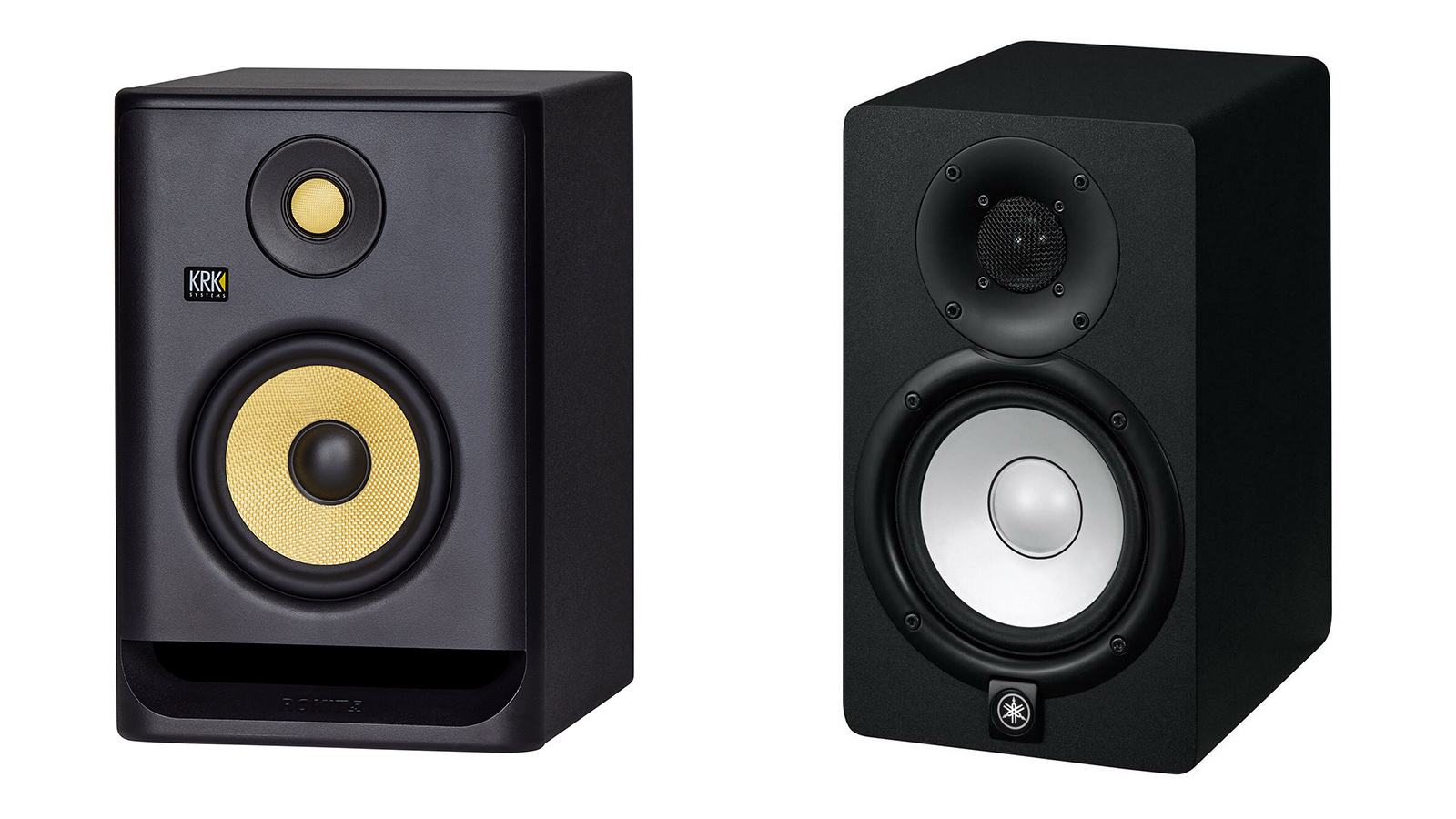
Both the KRK Rokit 5 G4 and Yamaha HS5 monitors have similar physical specs, with the Yamaha being that bit heavier whereas the KRKs are a little wider and deeper – but we're not talking major differences. That said, the extra width of the KRKs has helped to allow a wide reflex bass port to have been designed into the front fascia, and this should provide extra control at the low end compared to the Yamaha design which has its bass port as a circular vent around the back.
Both sets of speakers are designed for use as compact monitors, perhaps on a desktop, and they both fulfil this brief very well, and are suitable for any studio situation where space is at a premium.
Overall they are of a similar build quality too: compact and sturdy with rigid enclosures that are ideal for cutting down distortion, and the Yamahas also feature specially-designed mounting rings on the front to also help cut down vibration. The rigid cabinets on both also deliver a tight transient response, meaning the speakers should reproduce and follow your sound accurately and speedily and without flab.
Winner: Both speakers feature similar build quality and each has one or two smaller extras – the Yamahas have the mounting rings and the KRKs the front bass reflex port – so we think there's very little to separate the two speakers here.
KRK Rokit 5 G4 vs Yamaha HS5: Set up
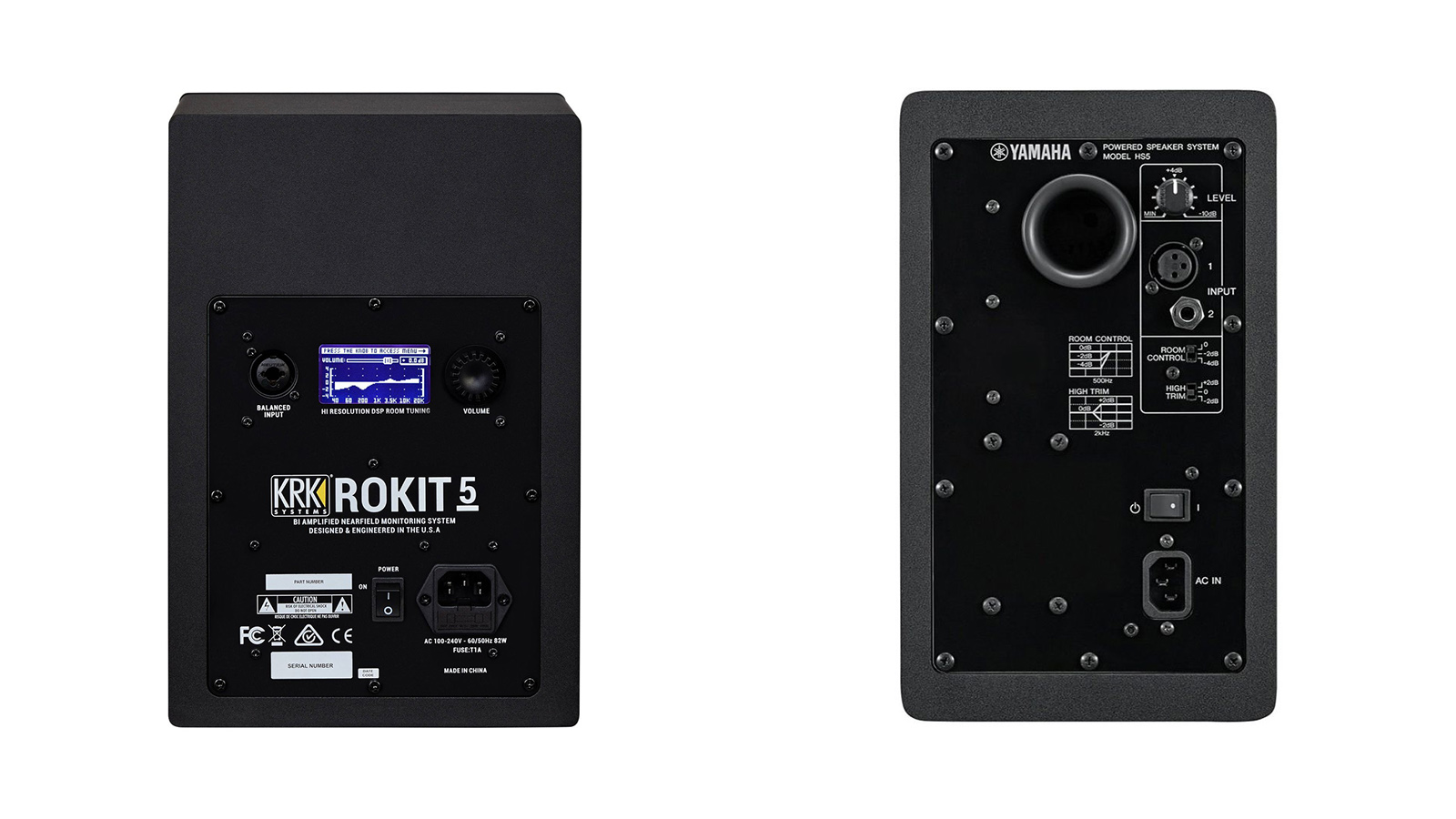
Setting up monitors can be tricky, often using trial and error – and trusted mixes of your own, or your favourite music – to make sure that your speakers are delivering what you expect. Both of these speakers can be set up in different ways so have different advantages and disadvantages.
The Yamahas are pretty easy and you simply adjust the filters accordingly. Room Control adjusts the bass over three settings depending how far your speakers are against the back wall. High Trim adjusts high frequencies over two settings (+/- 2dB); notch it up or down depending on how many reflections you are getting from your room or if your mixes are translating too brightly or too dull to other systems.
The KRKs, meanwhile, offer a lot more in terms of frequency tweaking but this makes them harder to get right straight away. There are presets to choose from for various setups which also mean a certain amount of trial and error; otherwise it's a case of using the KRK app and measuring where your room falls down and then tweaking the frequency bands individually to compensate.
Winner: The KRK just wins the setting up test simply because of the extra EQ features again, although with less options the Yamahas can be set up more quickly.
KRK Rokit 5 G4 vs Yamaha HS5: Sound quality
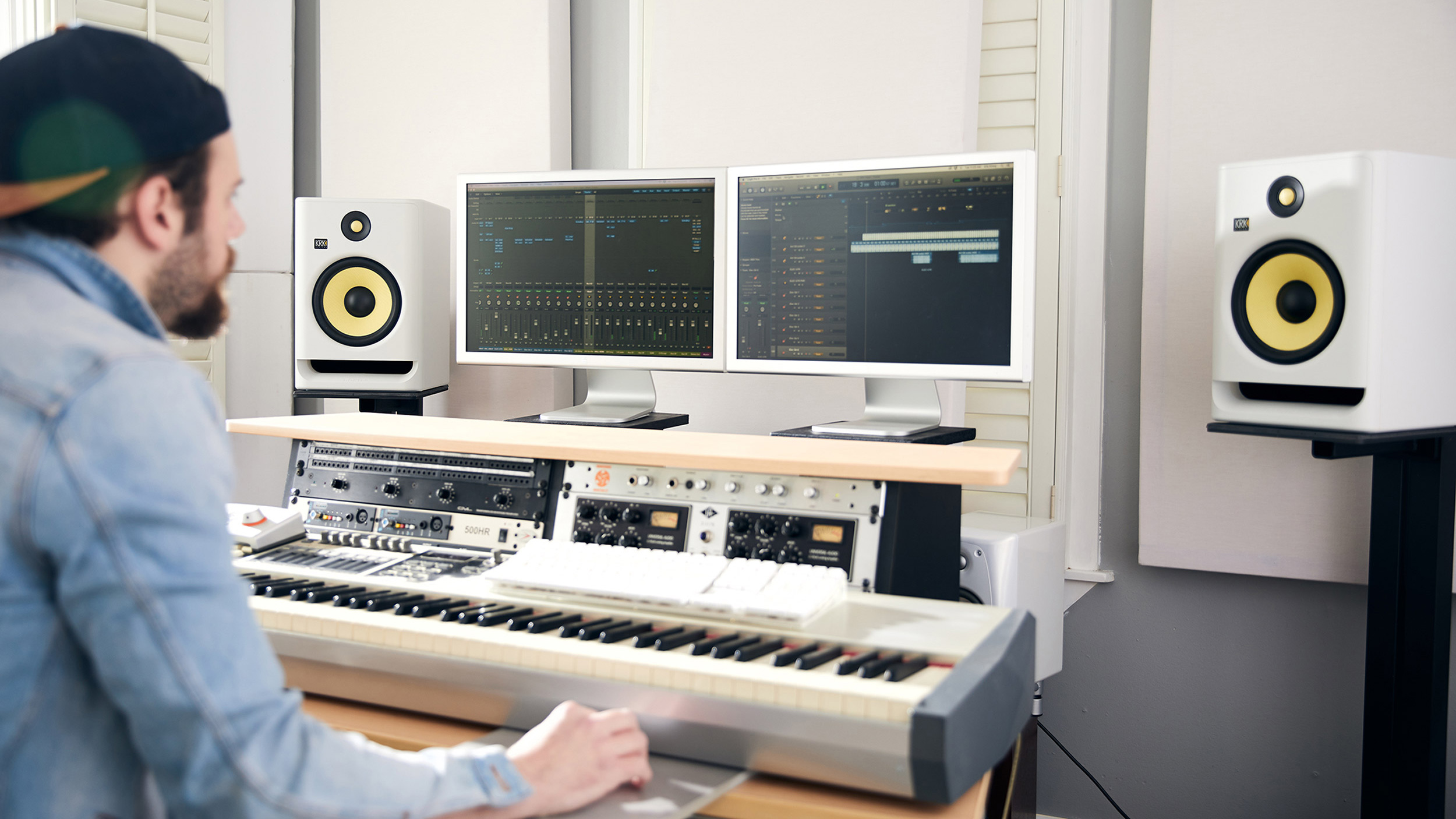
Finally, it's the all-important sound quality, and while it's apparent that the responses are similar, each model wins out in areas you might expect when you consider their specs.
First up, there's no doubting that the KRKs deliver a better bass response, with their reach going down to 43Hz – lower than the Yamahas. We like to think that we can also hear the benefits of that front bass reflex port coming into play here.
With the Yamahas, while they don't deliver as much bass, their sound quality is more even across the frequency range, which is actually what you want. While you might consider adding a sub woofer (like the BS8S) to extend the bass, the rest of the response is crystal clear and defined with the mids and highs almost effortlessly translating, whereas switching to the KRKs makes the same music sound slightly 'boxed in'. The Yamahas also boast a few extra watts of power which should suit them to slightly bigger spaces if required.
The Yamahas edge it, then, but both sets of speakers deliver great results for the cash.
Winner: The Yamahas just take the sound quality plaudits – but again, it's close – thanks to more joined up mids and highs and that extra power.
KRK Rokit 5 G4 vs Yamaha HS5: Overall verdict
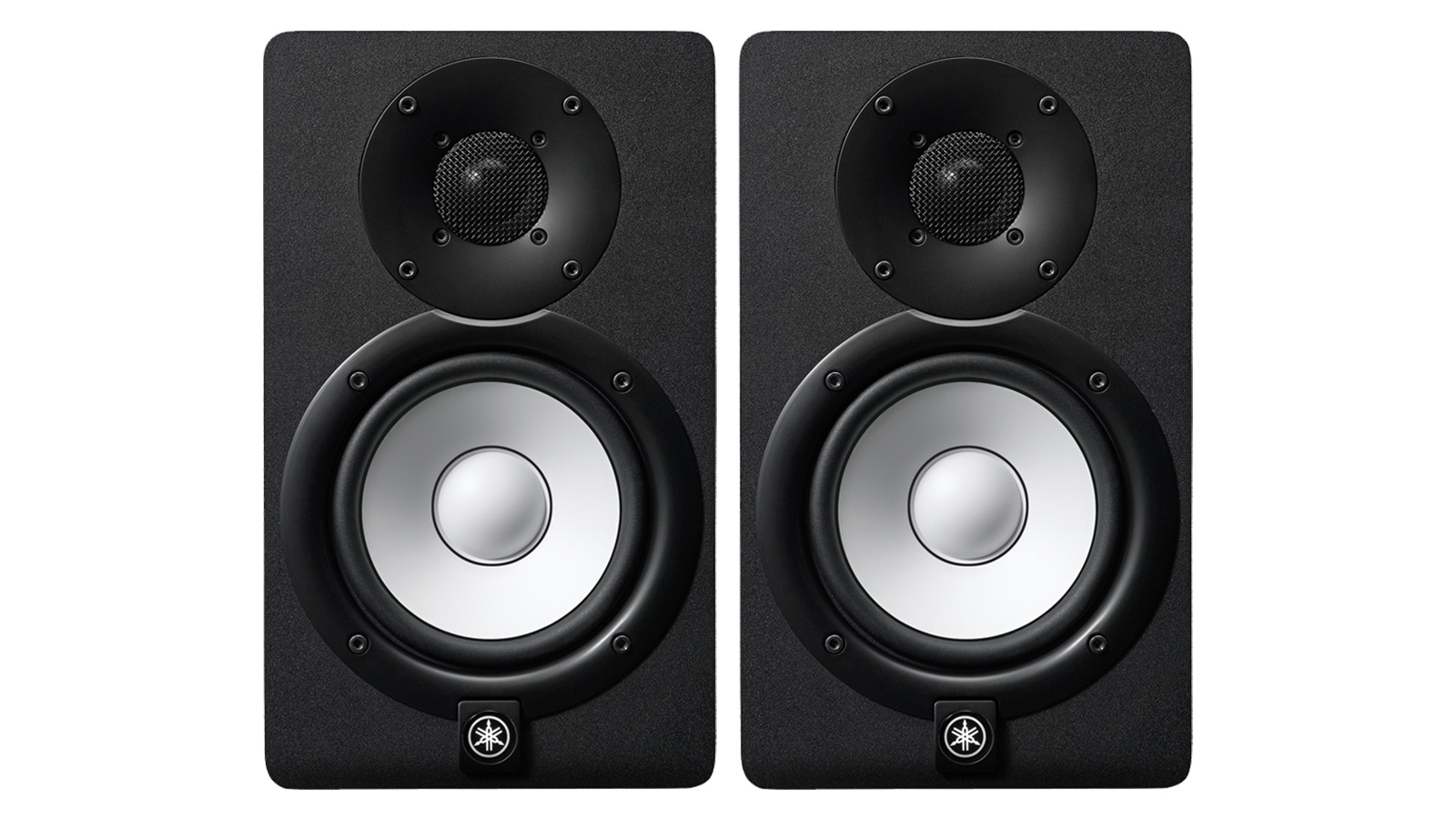
There's a very good reason that both of these speakers are so often recommended as budget monitor choices: they are both exceptional speakers for the money. And with both being so good, it makes it difficult to recommend one set over the other, but there are some crucial differences that might sway you one way or another.
The KRK Rokit 5 G4's EQ extras won it two categories – features and setup. This extra flexibility to tweak the speakers to your room – and its fantastic implementation – just seems so head and shoulders above what the Yamaha offers (and just about anything else at this price point) that it almost makes it a done deal for the KRKs.
The only problem is that it might take a little while to get them sounding just right. In our tests we still preferred the sound of the Yamahas over most of their frequency range, meaning we wanted to go back to the KRKs again to adjust them. There's such a thing as too much choice and that's what this feels a little like, although the Yamahas go to the opposite extreme with just five different setting options to tweak.
The Yamahas win on overall sound quality, but only by a whisker, and we do get the comments from some users that the KRKs are more suited to modern and punchier productions. But when it comes to your studio speakers, the sound is the all-important factor, and in the Yamaha's case, it is more controlled and slightly more refined. There really isn't much in it though.
And that's the story overall. Want something refined, elegant but perhaps needing a subwoofer? Go for the Yamahas. Want a young upstart with bass attitude and 21st century features? Go KRK. For us, though, the Yamahas (just) edge it.


Andy has been writing about music production and technology for 30 years having started out on Music Technology magazine back in 1992. He has edited the magazines Future Music, Keyboard Review, MusicTech and Computer Music, which he helped launch back in 1998. He owns way too many synthesizers.










